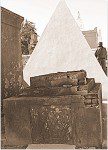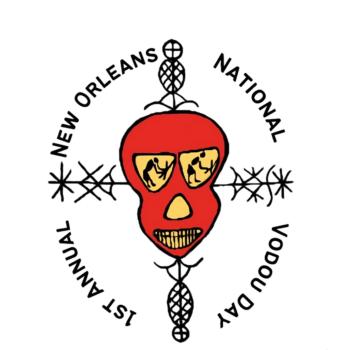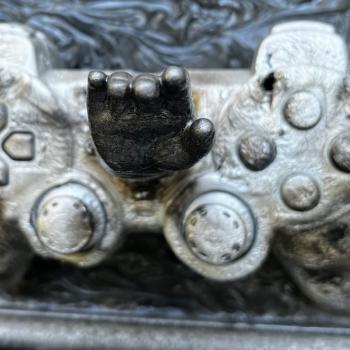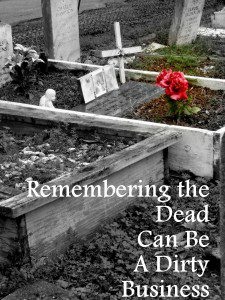
Editors’ Note: This article is part of the Patheos Public Square on Remembering the Dead: Ancestors, Rituals, Relics. Read other perspectives here.
Almost everything about the tradition of New Orleans Voodoo is seen as “unique”. The how, when and why of our practices can be a mystery sometimes, even to practitioners themselves. In fact the Haitian forms of the religion, more properly known as Vodou, even call the deities themselves Les Mysteres, or the Mysteries. Many of our mysterious practices are designed to honor and salute the Dead.
In reality it isn’t really so much that the rites and practices are that so different, but rather the attitude of the people performing them. Almost everyone drinks coffee in the morning, yet Voodoo practitioners approach a cup of coffee as a sacred object. Everything is divine or has the chance to become that way. Part of my spiritual training, a custom that I have passed along to my own godchildren, is the practice of naming the ancestors upon rising, and then honoring them with the first pour of morning coffee. A litany of names is carefully recited, as all the known ancestors that have come before are remembered and given that energizing offering.
We pray to those whose names are gratefully remembered. This includes people we were directly related to by blood, and also anyone we cared for who has passed on. These prayers remind us of the sacredness and impermanence of life. It reminds us of the strengths these people had, the challenges they faced, and the courage they roused up. They urge us to have these things too as we face the new day.
Our unique attitudes are also present in other aspects of ancestor veneration as well. Most people like to retain keepsakes and mementos from their beloved dead. They might place them in a drawer or other treasured spot. They bring these treasures out at special and important times. In New Orleans Voodoo we cover them with sequins and parade them about. I am speaking specifically of the creation of flags, which I wrote about in my piece last week, Remembering the Ancestors by Creating Voodoo Flags.
Maybe it’s because our religion was re-born of deep and abiding hardship. Slavery, Colonialism, and oppression teach you very quickly that there may not be a tomorrow to have a special and treasured memory. We might as well enjoy ourselves and our dead however and whenever we can, with every breath we take and every step we make.
In Voodoo we are conscious of the fact that the ancestors are not only in our blood, but also in the ground we walk on. They fertilizing every living thing in and of the earth. Many of our ancestor rites and rituals involve using actual dirt from cemeteries, graves and sacred places. People seem to be abuzz these days about the concept of “Earthing.” New Age proponents say it’s because have our bare skin near the earth helps us to connect to it’s charge. Everything old is new again, like the song says. There are rituals where we cover ourselves in dirt, sprinkle dirt around, and then there are the soul jars. Soul jars sound like something from a bad horror film. In reality they are containers created to hold the Ashe, or sacred energy of a person. The jars can be created for someone living or dead. There are probably as many ways to create soul jars as there are people that make and use them. The jars created in Haitian Vodou are often made of earthenware and contain herbs and other natural materials, similar to the soperas created for certain Orisha in the Lucumi ( Santeria) religion.
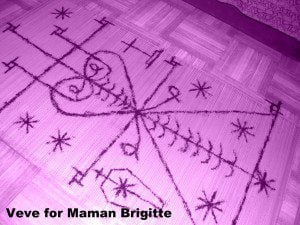
My house, which practices a New Orleans style of Voodoo, creates soul jars for our ancestors including cemetery dirt, personal items like hair or clothing, and ritual items for Maman Brigitte, our patron goddess. Maman Brigitte is most often recognized as the Bride of Death, and is honored at the oldest female grave in each cemetery. Her sacred botanicals are orange, violet, cotton, yucca, lavender, and hot peppers. The jars are decorated with sequins, ribbon, cowrie shells, silk flowers, veves (ritual symbols,) pictures, and photos. Like I say to my godchildren the more you put into it, the more you get out of it. The process of decorating and adorning the jars is part of the magickal process. These actions help to active the jars and connect them with those who create them, and those they are created for. Next the jars are put to rest. This is a ceremony in which the jars are fed. They are given offerings of food and drink. Candles and incense are lit. Then the jars are covered with a white cloth and they are symbolically sent back to Africa to gain the knowledge and wisdom of our ancestors. Incidentally this is also a ceremony we also perform with the sacred drums. When the jars return after a period of time they are given a place of prominence on the ancestor shrine and used as another representation of and connection to our beloved.
New Orleans Voodoo has many ways of connecting to our treasured dead. Every sip of coffee, every step are more opportunities to honor and worship. Part of our tradition is sharing these ways with all who can appreciate them, allowing them to remember these ancestors each day.


